INTERVIEW: JAMES MOFFAT – ALL CHANGE
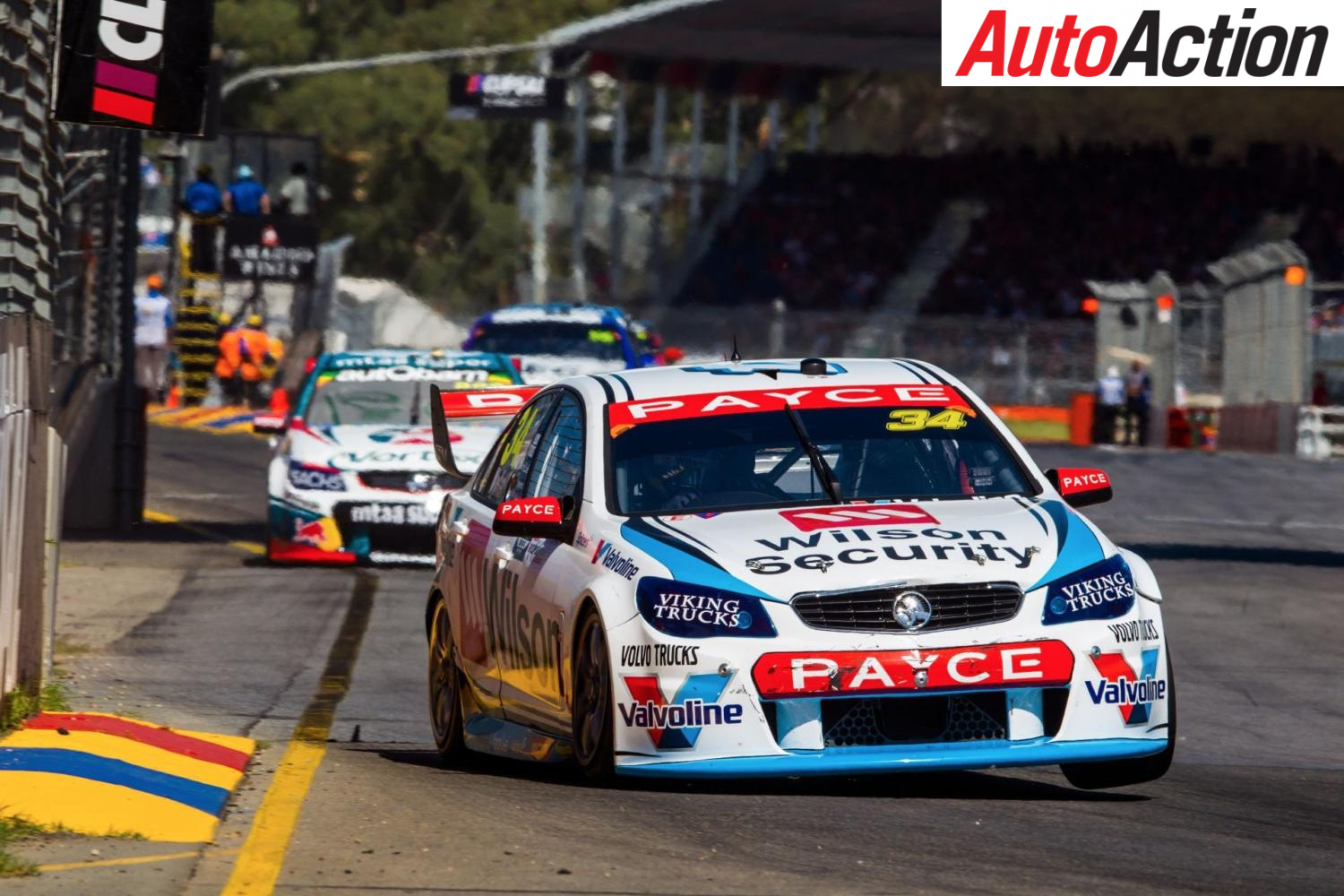
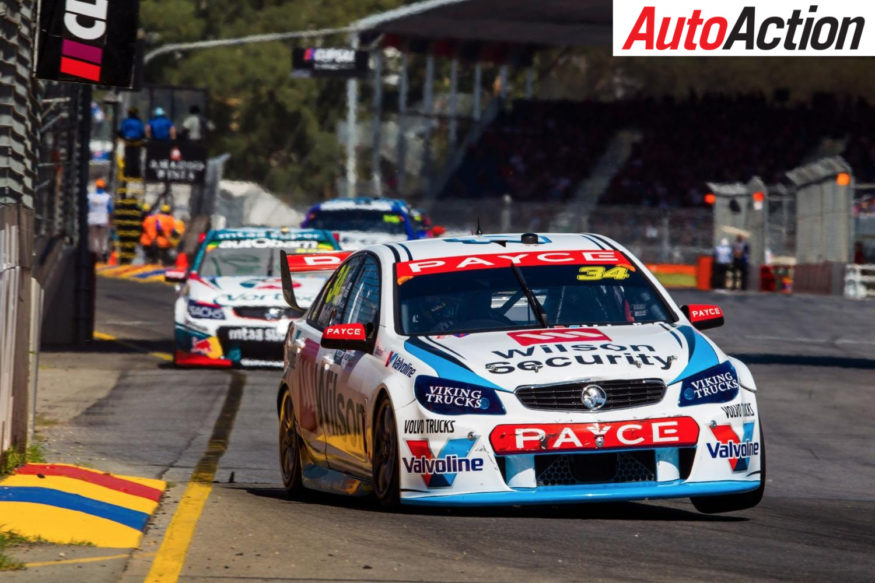
It was a busy off season for GRM and James Moffat – Photo: Dirk Klynsmith
IT WAS a busy summer for Garry Rogers and his team.
By PHIL BRANAGAN
Over December and January the team was in the news often, announcing that it was parking its Volvo S60s and racing Commodores this season. Then Garth Tander came on board, the long-time Holden Racing Team driver returning to where his professional career started two decades ago.
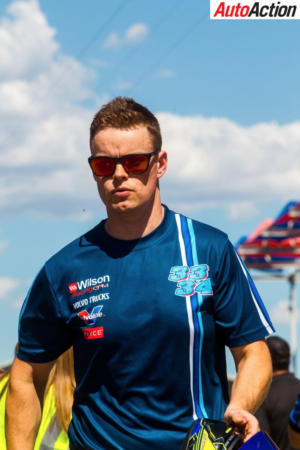
James Moffat at GRM – Photo: Dirk Klynsmith
But while all that was getting headlines, on the other side of the garage James Moffat has been quietly getting on with things, preparing for the challenge of getting to grips with his fourth brand of Supercar. The second-generation driver was overshadowed by teammate Scott McLaughlin last year – and so was everyone else who tried to match him in the Volvo – but Moffat did better than most.
Now there is a new teammate, a new car and a new season to work on, with a promising top-10 result on the streets of Adelaide.
Before he set off for Albert Park Moffat sat down to give his thoughts on his new challenges.
AA: There have been big changes for this season. How does it all look from your point of view?
JM: Firstly, from a team perspective, it was disappointing I guess that the team wasn’t able to come to an agreement with Volvo, whereby they could continue racing the Volvos for at least another year.
Even though I came into that program at what effectively was the last year of it, I can see how for everybody in the team it was quite hard to have that happen, with all the work they put into those cars. Clearly it was a pretty successful three years of running that car with Scott [McLaughlin] – it’s a combination of Scott and Richard [Holway] I probably should say.
I definitely went into the off-season not quite sure what I was going to be racing. The indications from the team, and all the dialogue that I had from the team, was that their intention was to race the Volvo. Then all that changed very quickly.
Another decision for the team to abandon Volvo and to race with Commodores, for me that was another good opportunity to experience a different package. But at the same time another challenge because it’s something that’s completely new to me as well.

GRM switched over to Holden Commodores during the off season
AA: At what point did you find out, before the public announcement and the media were advised, about the situation with the Commodores?
JM: I found out very early January.
AA: It was that late?
JM: It came as a bit of a shock. More so, probably, because of all the dialogue I had received from the team was that we were going to be racing Volvos. But clearly something happened in the background with everything that was going on that that wasn’t a possibility and then on the flip side to then see the amount of work and effort that went into build the cars just incredible.
AA: As a driver, how do you react to that news?
JM: For me it was just about getting on with it. There was nothing really in my control that I could do to change the situation, so there was no real point going on or getting upset about it, to a certain degree, but to accept the decision and move on with things.
I guess probably what this made the transition a little easier, from my point of view, is probably having somebody like Garth come in. His experience and knowledge, particularly with that [Holden] package, is as good as anybody’s. The fact that we were with Walkinshaw engines as well, it’s probably turned to be a good thing having him come on board.
The difference to him is essentially the ‘GRM stuff’ that’s in the car, which is all underneath in terms of the geometry stuff.
AA: That’s one of the things I wanted to ask you about. How much, if you like, ‘GRM DNA’ is carried over between the brands, and how much ‘Holden DNA’ to you have to get your head around?
JM: In terms of ‘GRM DNA’, pretty much everything. In terms of comfort; pedals, steering wheel, dash layout… the part of the actual Holden dash where the Holden dash sits in, that’s Holden. All the rest is the same as the Volvo, so for me, I’m in the same seat that I had in the Volvo.
The biggest Holden change in DNA is under the bonnet, with the engine package and the other biggest change is clearly the aero package. I guess people don’t consider tuning cars to be aero-sensitive based cars. But the way the category has gone, in terms of the homologation process and what the manufacturers have done to make sure they are getting the absolute most out of the package, is amazing.
I now have had the opportunity to drive three different manufacturers in three years… that has been quite an eye opener in many ways.

James Moffat’s Volvo S60 from 2016 – Photo: LAT
AA: Has it also been a little bit frustrating? From the outside, and that’s my view, you look like you were getting your head around driving the S60 and there were some strong performances particularly from midseason onwards?
JM: I was looking forward to continuing in the Volvo. From probably the midseason onwards it’s really the exception of probably Bathurst – that was a bit of a nightmare – but from really Townsville onwards, the performance and competitiveness was much more respectable.
A lot of it was where I wanted the car to be, and I was looking forward to being able to build on what I learnt with that car and that package last year. But I guess stepping into the Commodore, my initial impressions of everything – the engine packages and all the other bits and pieces – were that it was a lot more comfortable for me to get into, straight out of the gate.
I definitely was at the same level of comfort at the test day that I had with the Volvo, but it took me quite a lot of time to get to that same level [in the S60]. From that point of view, it was encouraging driving the Commodore for the first time.
AA: Was the S60 edgy? It looked like it from outside and, again, there were a few different drivers partnering Scott in that car. Was it really tough to get that last bit of speed out of it?
JM: I guess that’s the problem with our category you could be half a second off the pace and you are absolutely nowhere. It’s obviously what the sport has become.
Clearly that car was very well suited and matched to Scott and the particular driving style that he has. Richard also knew exactly what to give him. It went quick in the window, so they were very good tuning the car and getting it to where Scott needed it to be.
I guess for me that was quite often very different to what Scott wanted. So from a team point of view, it was probably easy for them to continue down the path that Scott was going down. But having said that, I think I was the only one that managed to out qualify [him] on a few occasions.
I felt like if we could get the car closer to how I needed or wanted it, that we were as competitive as Scott.
AA: When you said the car was suited to Scott, was that something that was by design or was that the way things worked out?
JM: I think probably a little bit by design.
Obviously they had the ability, or the knowledge that they were going into that program well in advance, and [they] definitely came up with a package that they thought was the right direction, or the right way to go.
They knew they had a driver in Scotty for at least those three years that they could really develop the package around. And it probably didn’t help going through a driver each year in those three years in the 34 car, in terms of stability and bits and pieces.
There were a few inherent things in the car that Scott could handle and liked that way. But it was very different to what I was used to, coming from the Nissan and, even further back, to that the Falcon at DJR. Those were aspects of the car that I definitely struggled with, to begin with.
AA: What are they in layman’s terms; what do you like from a car?
JM: For me, I guess, I like the a quiet stable [car] on entry and from that, it gives me speed in the entry part of the corner.
The thing that’s difficult to describe in layman’s terms is, not any one driver drives the same, and when you are talking such small margins, a small difference can have a big effect, or difference, on lap times. So I felt like, at Nissan, I had a car underneath me most of the time that suited my driving style, and how I like to drive. That gave me the confidence in the car to push to the level that I needed it to.
It took me a long time to get to that similar point last year with the Volvo and in all honesty, I probably never really felt that full level of what I was chasing. But that’s just how it was.
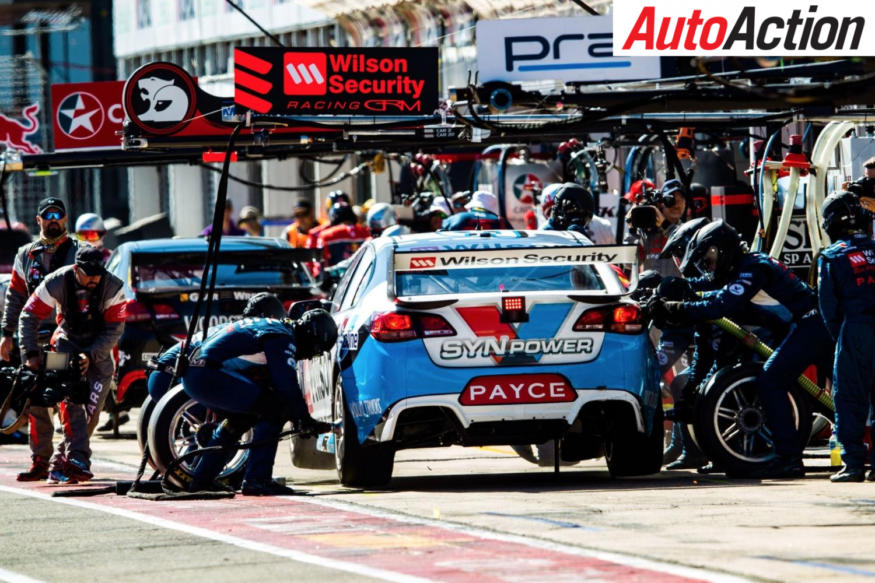
Garth Tander joined GRM during the off season – Photo: Dirk Klynsmith
AA: It’s early days with you and Garth but what are your impressions? How close are you and what do you like from a racing car?
JM: Like you said, it is early days. But so far it appears all our feedback on the car is virtually identical, which for me straight away, is pretty refreshing.
That wasn’t the case for me last year with Scott so it made it probably difficult for me at times. Scott was doing well, so there was probably a bit of mentality in the team of, why change things up, or try and change things too much from what they were running with Scott?
But so far this year it seems like Garth and I like the same things. We have been reporting back on the car with similar feedback so hopefully that can only make our development through the year, or this early phase in the year, be quicker. Clearly we starting a bit behind most teams, with what’s gone on in the off-season, and just getting to the test day, it was all about just building the cars, and having something to show up with on the test day.
We identified some things at the test that we were able to get in place, to try and improve some things for the Clipsal. But the fact that we are speaking in the same terms about the car hopefully means that in the early part of the year, we can hopefully fast-track a bit of the development quicker than what would be the case instead of saying other things about the car.
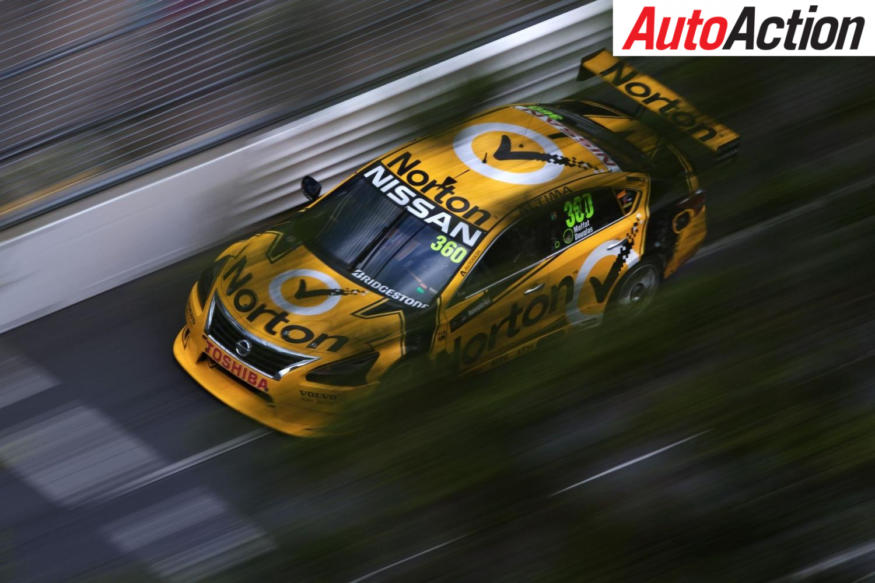
James Moffat at Nissan in 2013 – Photo: LAT
AA: Has anybody else driven all four of the Supercar brands James?
JM: I don’t think so.
AA: You’re well placed to comment aren’t you?
JM: I am in a well place I guess. The thing is though, my Falcon experience is of the old generation car, but we shouldn’t let that get in the way of a good story.
AA: Let’s get past the fact that was a previous generation car, give me 10 words in the Nissan you raced a couple of years ago.
JM: A good chassis, and a car that we had to work very hard on the engine development side of things.
But for me the Nissan was very comfortable to drive and [performed] how I liked to drive the car, and how it attacked the corner.
The engine was the biggest handbrake, if you like, in the program, at least when I was there anyway, and I don’t think anybody involved in the program during those three years would deny that.
AA: What about some words on the Volvo?
JM: The Volvo was a challenging car for me to get my head around, but almost the opposite of what I had at Nissan, in regards to engine performance. That was very strong, but unreliable, I might add.
AA: Early days with the Commodore but good first impressions?
JM: Yeah good. I think it’s still too early to tell how it’s going to unfold but additionally, combined with the engine package, it just all feels a bit more ‘normal’ to me, which hopefully means we can have some strong results throughout the year, because they were a bit lean last year.
AA: How do you approach Albert Park – a no-points weekend, and try things?
JM: I think Albert Park is a really good opportunity for us to try some things with the car that would identify it not only after the test day.
Clipsal showed some areas where we think we need to improve, or have improved. But for me I want to go there and do as well as we possibly can along with, hopefully, learning some things along the way.
I think a strong result over the weekend there and the momentum that we will gain is as a group or sort of a far outweigh what we might be able to achieve.
With the workload the guys have had in the off-season and everything else, if we are able to have some good results, I think the confidence and momentum that would generate for the group would far outweigh anything that we might be able to achieve in terms of understanding the car better.
Every time we run we understand it better, it’s only natural for that to happen when you’re in a new package.
I love the circuit. It’s always a great event to be a part of regardless of whether we are racing for points or not. I will certainly be going there to do my very best.
Pick up the latest issue of Auto Action magazine for our most recent interviews. Also follow us on social media Facebook, Twitter and Instagram news between issues.






